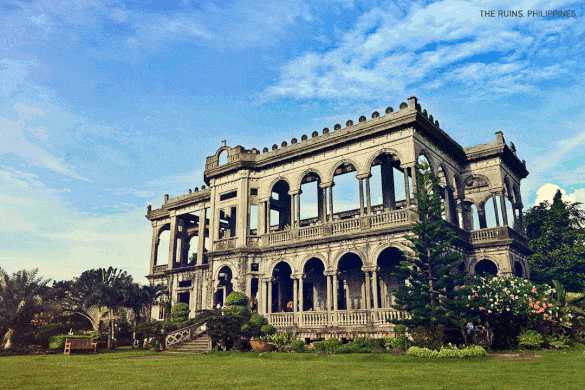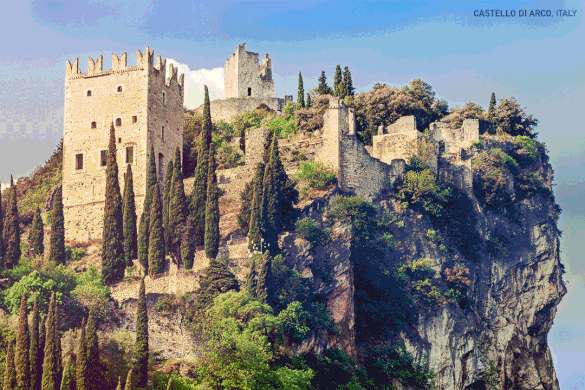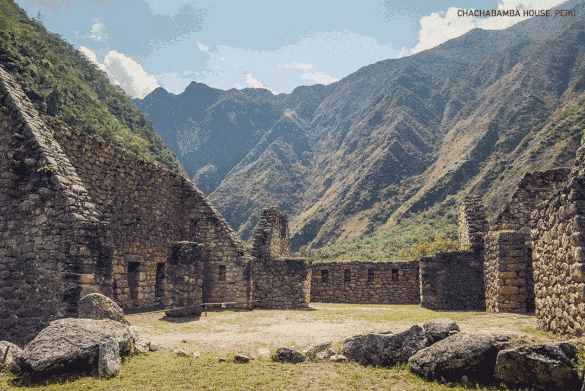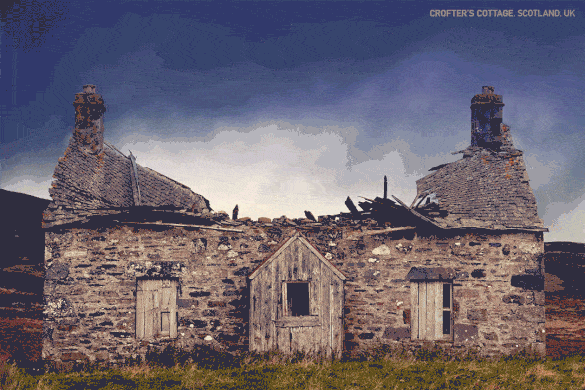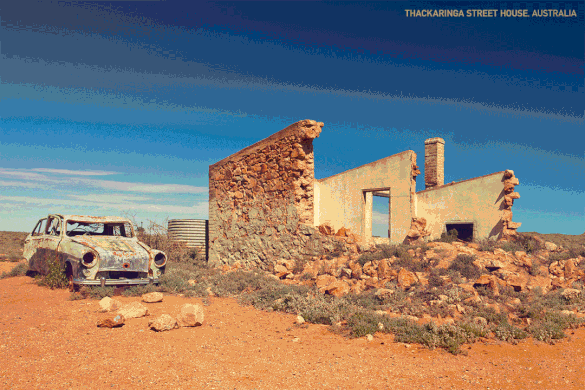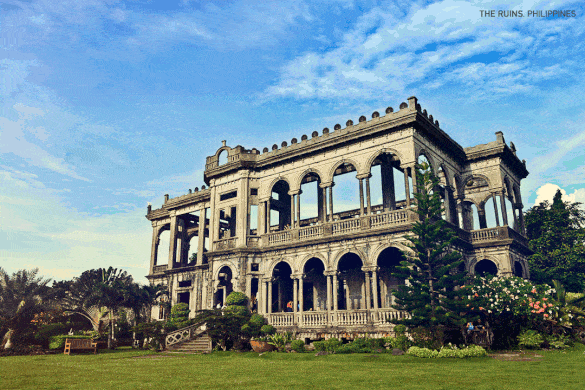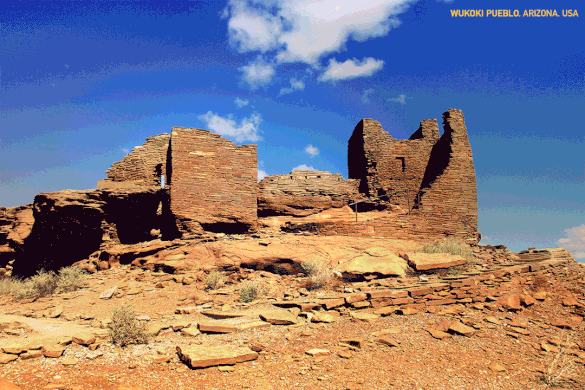From ruined mansions to forgotten worker’s cottages, abandoned houses often leave us wondering what they used to be like: who built them, how did the people live – and what might they look like if they were still used today?
It can be challenging to picture the contrasts of an old building in modern use, but this is how some of the most exciting architectural projects have come about. That’s why we’ve re-imagined how six abandoned homes from around the world would look if new life was breathed into them. Come explore with us!
1. Castello di Arco (Trentino, Italy)
This dramatic castle occupies a commanding hilltop position in northern Italy. Its far-reaching views would have been vital for defence when it was constructed in the 11th century – and they’re just as attractive today, offering panoramic vistas across the Sarca Valley.
The sturdy stone construction and battlements along the roof of the main keep are typical of medieval castles, while the now-missing rear wall provides the perfect space for an addition using modern materials.
2. Chachabamba House (Chachabamba, Peru)
It may seem modest, but this former gatehouse on the Inca site of Chachabamba is an impressive feat of architecture.
With limited tools, the Incas constructed buildings like this one with perfectly fitting drystone walls, often on difficult elevations and surfaces. The low walls and missing roof give us plenty of chance to renovate it with a light, open design that takes advantage of the stunning surrounding mountain views.
3. Crofter’s Cottage (Orkney, Scotland)
A traditional Scottish crofter’s house, this building used dry-stone construction that likely dates back to the early 19th century. It’s resting place – the island of Eynhallow – was abandoned in 1851 after a plague and hasn’t been inhabited since.
The roofs of the houses were dismantled to ensure no one would return, offering the perfect opportunity for a 21st-century re-imagining of this seaside cottage.
4. Thackaringa Street House (Silverton, NSW, Australia)
This small house on Thackaringa Street, in the outback town of Silverton, was likely built during the mining boom of the 19th century. Set a short way off the main road, it has a typical single-storey design and is built of stone with plastered interior walls.
It seems to have been a relatively small house, with only two rooms remaining. Both are open at the rear, making it easy to add modern elements without compromising the original design.
5. The Ruins (Negros Oriental, Philippines)
This historic mansion is a true fusion. Located in the humid tropics of Negros Oriental, it was built for a Portuguese sugar merchant in an Italianate style. Its elegant columns, intricate cornices and marble-like finish – achieved through a wash of egg white and concrete – are all reminiscent of Europe, while the large windows and open spaces make concession to the local climate.
The building, once the largest in the region, was torched during WWII to avoid it falling into Japanese hands. Only the shell still stands, but the airy construction makes it ripe for modernisation.
6. Wukoki Pueblo (Arizona, USA)
Between Flagstaff and the Hopi Reservation is the Wukoki Pueblo. At first sight, it blends into the landscape, with adobe bricks and stones that match the colour of the surrounding desert. There are a few windows to keep it cool, and strong mortar has helped the walls stand the test of time. Although it’s now a ruin, this was once a bustling home to a number of families from the Ancient Pueblo peoples in the 12th and 13th centuries.
Many thanks for this article from our friends over at Budget Direct
Sometimes contrasts can strike off some of the most interesting design concepts – and that’s certainly the case with architecture. By imagining these houses being renovated with a 21st-century eye, we can shed new light on these old buildings, highlighting classic features while also drawing out new ones.
